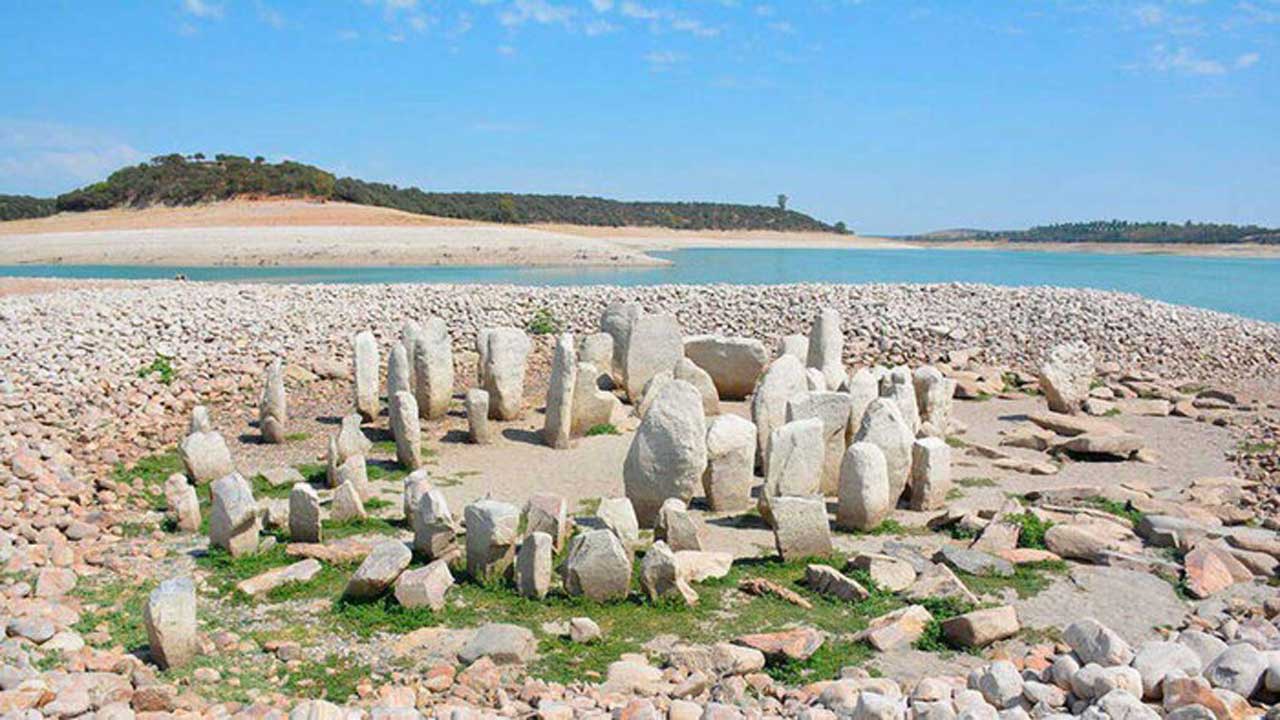The drying up and shallowing due to the drought of rivers, lakes, and reservoirs in Europe caused a boom in the so-called “dry tourism” – objects appear at the bottom that has been hidden from view for many years, which tourists are trying to see.
So, in the Serbian Prahova, at the bottom of the Danube, the skeletons of 20 German warships from the Second World War became visible.
In Spain, in the Valdecañas reservoir, which is only 26% full due to drought, the prehistoric dolmen Guadalperal was exposed, a century ago found by the German archaeologist Hugo Obermaier. It is believed that a circle of dozens of megalithic stones, called the “Spanish Stonehenge”, appeared 7,000 years ago.
And at the bottom of the Sau reservoir, the Church of San Roma, which flooded in 1962, appeared.
In Italy, a sunken barge from the Second World War appeared in the shallow bed of the Po River. The water level in the Tiber River dropped so much that a usually flooded Roman bridge of the 1st century BC appeared. BC e. And in Lake Garda, white rocks were exposed.
According to the European Commission, the drought in several regions of Europe may last until November 2022. It is called the strongest in the last 500 years.

